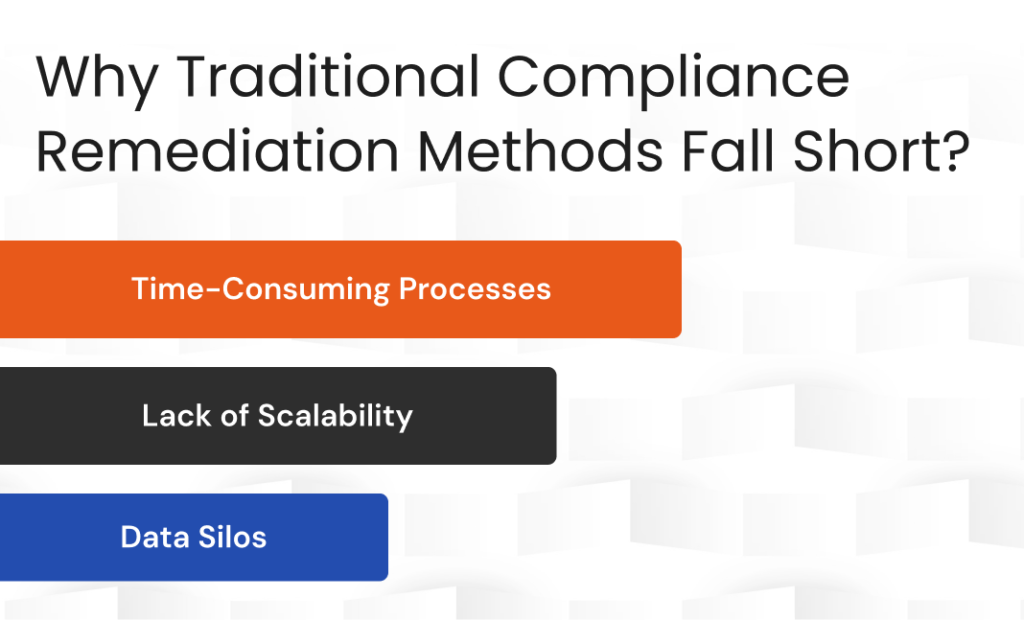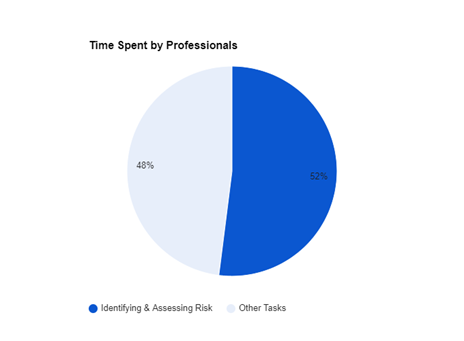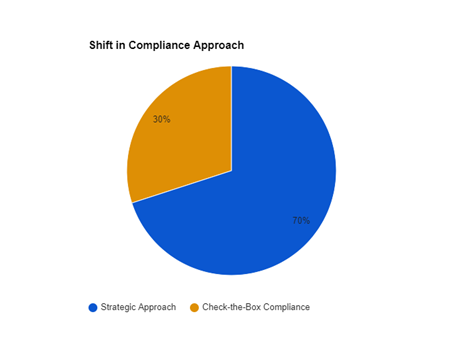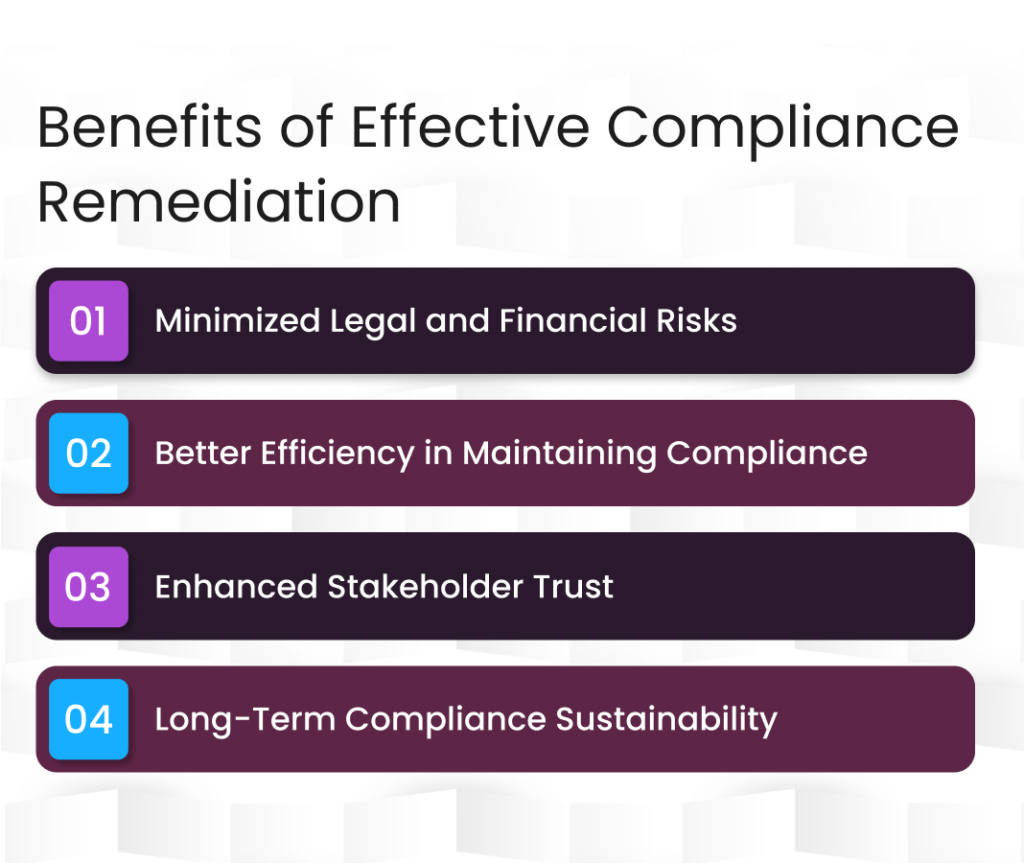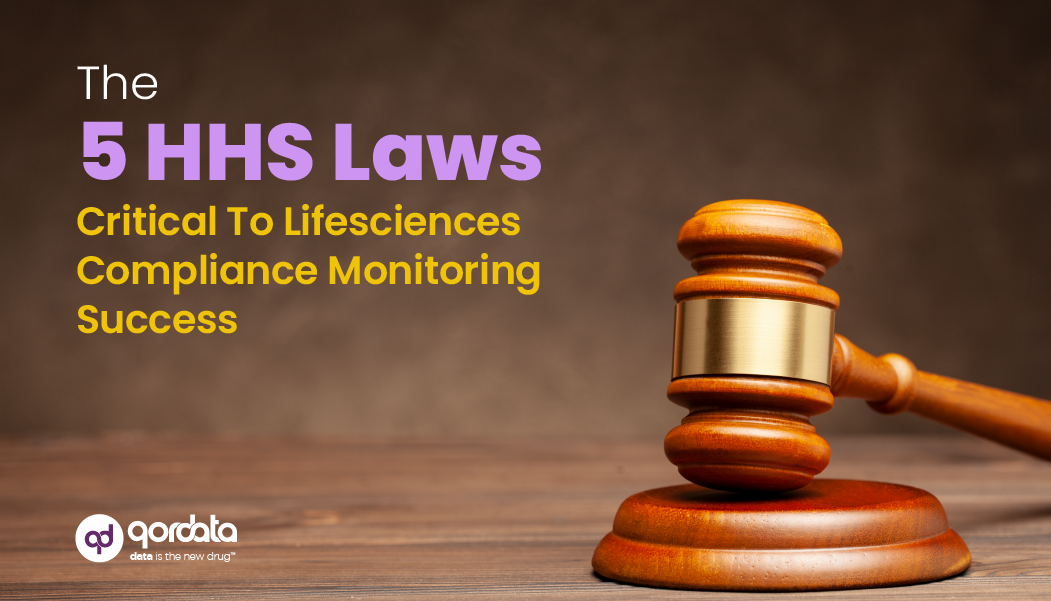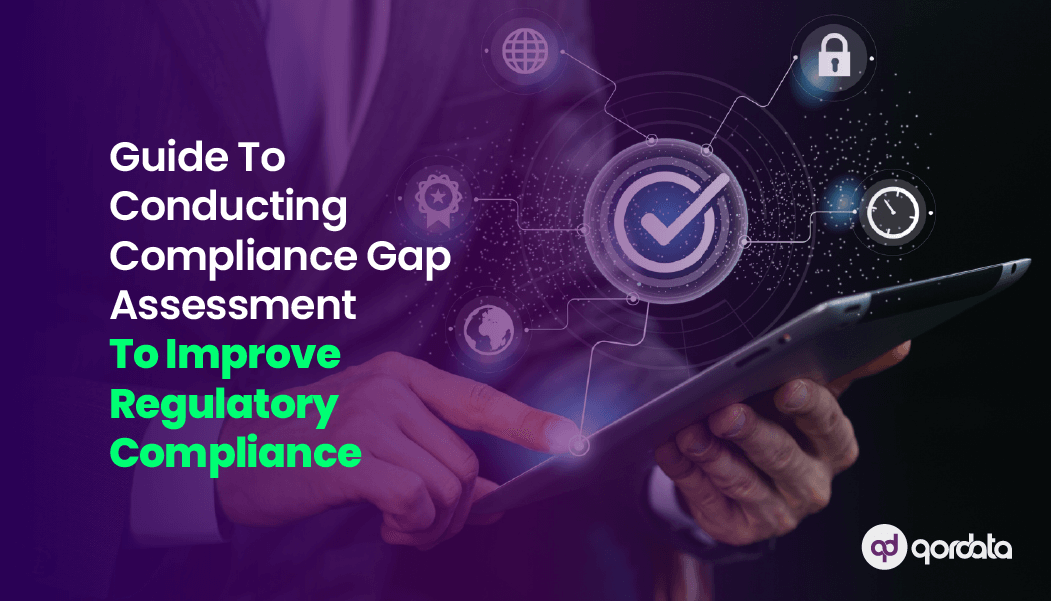“Effective remediation relies on companies to fully understand and contextualize the observations made during an inspection and address root causes.”
– FDA
Compliance remediation in the life sciences industry is a critical process aimed at identifying, correcting, and preventing non-compliance issues. Given the complexity of the regulatory landscape in the United States, the importance of a well-defined remediation strategy cannot be understated.
This blog will explore best practices for compliance remediation with a focus on proactive measures, leveraging technology, and integrating a robust compliance solution to build an efficient and effective compliance program.
What Is Compliance Remediation in Life Sciences?
Compliance remediation involves identifying gaps or violations in regulatory adherence, implementing corrective actions, and modifying procedures to ensure future compliance. Effective compliance remediation aims not just to rectify existing issues but also to develop preventive measures that mitigate risks in the future. This is essential for maintaining regulatory adherence, building trust with stakeholders, and ensuring operational efficiency.
Key components of a successful compliance remediation approach include:
- Identification: Conducting regular audits and monitoring systems to recognize compliance gaps.
- Correction: Addressing identified issues, such as revising procedures or retraining staff.
- Prevention: Implementing strategies to prevent future occurrences, such as enhancing control mechanisms and monitoring systems.
Challenges in the Conventional Compliance Remediation Strategy
Traditionally, compliance remediation efforts have been reactive, primarily driven by findings from regulatory inspections or audits. This approach is not only time-consuming and error-prone but also fails to prevent future violations.
Pain points with such methods include:
- Manual documentation and data entry can lead to inefficiencies and inaccuracies.
- Outdated methods struggle to adapt to changing regulatory requirements and expanding global operations.
- Fragmented data management hinders the effectiveness of compliance and remediation services.
In the current regulatory environment, life sciences companies need to shift from these reactive approaches to a proactive and integrated compliance strategy that utilizes advanced technologies.
Best Practices for Compliance Remediation in 2024
-
Proactive Monitoring and Identification
Effective compliance remediation begins with proactive monitoring and early identification of compliance risks. Leveraging automated compliance monitoring software powered by AI and machine learning can help detect patterns and anomalies that indicate potential risks, providing real-time insights that enable timely action before issues escalate. This is a foundational step for effective compliance risk mitigation strategies.
-
Lean Six Sigma Approach
Eliminate inefficiencies and improve the overall compliance and remediation process in your organization. Applying the DMAIC framework allows companies to reduce variability in compliance processes and ensure consistent regulatory adherence.
The DMAIC (Define, Measure, Analyze, Improve, Control) framework is an effective methodology for ensuring successful compliance remediation. This approach begins with defining compliance gaps, assessing the impact, analyzing root causes, implementing improvements, and establishing control measures to sustain compliance.
- Define: Pinpoint where current practices diverge from required standards using audits and monitoring tools. Clearly define the scope of remediation projects to ensure a focused approach.
- Measure: Collect data on incidents of non-compliance, including frequency and severity, and assess their impact. Benchmark current performance against industry standards to understand the effectiveness of remediation efforts.
- Analyze: Use root cause analysis to determine the underlying reasons for compliance failures. Tools like the 5 Whys or fishbone diagram can be helpful here.
- Improve: Develop targeted strategies to correct identified issues and pilot these solutions to validate effectiveness before scaling up.
- Control: Establish monitoring systems to ensure that the implemented remediation measures are effective and to prevent future compliance breaches. Create a feedback loop for continuous improvement.
-
Develop a Tailored Compliance Remediation Plan
A one-size-fits-all approach does not work for compliance remediation. Each issue requires a tailored plan that addresses specific circumstances. Outline clear action steps, assign responsibility, and set timelines to ensure accountability. Collaboration between cross-functional teams, including legal, compliance, medical affairs, and commercial operations, is crucial to developing a holistic and comprehensive solution.
-
Implement Corrective and Preventive Actions (CAPA)
Corrective and Preventive Actions (CAPA) are essential elements of compliance and remediation services. Corrective actions address existing compliance gaps, while preventive actions focus on preventing future issues. Utilizing compliance remediation software to track and evaluate CAPA helps ensure the actions taken are effective and remain relevant over time.
-
Leverage Compliance Monitoring Solutions
Integration of a Global Compliance Monitoring Solution is key for ongoing compliance remediation. Centralized compliance data, real-time oversight, and customizable dashboards allow stakeholders to access transparent, up-to-date information, improving accountability. These compliance remediation services also enhance efficiency, helping organizations respond more effectively to regulatory demands.
-
Provide Continuous Training
Compliance issues often stem from a lack of understanding among employees. Providing regular training is crucial to prevent future compliance violations. In 2024, life sciences companies should use digital training platforms to offer consistent, scenario-based training sessions, ensuring that employees are informed about evolving regulations and best practices in pharmaceutical compliance remediation.
-
Conduct Post-Remediation Audits
After implementing compliance remediation steps, it is essential to conduct post-remediation audits to validate the corrective actions taken. This helps assess whether the issues have been effectively addressed and identify any remaining vulnerabilities. Post-remediation audits should be part of a comprehensive regulatory risk management in life sciences strategy, promoting continuous improvement and risk reduction.
-
Foster a Culture of Compliance and Transparency
Establishing a culture that prioritizes compliance and transparency is a fundamental aspect of a strong compliance program. Encouraging employees to report compliance concerns without fear of retaliation is vital for early detection of issues. This fosters a proactive approach to compliance remediation and strengthens the organization’s ability to address regulatory challenges effectively.
-
Monitor and Review Effectiveness
Continuous monitoring is critical to ensure the effectiveness of compliance remediation efforts. Utilize key performance indicators (KPIs) to evaluate the success of the remediation plan, track trends, and make adjustments as necessary. Compliance remediation services that integrate monitoring tools and provide actionable insights are ideal for ensuring long-term compliance and sustainable improvements.
Benefits of Effective Compliance Remediation
- Proactive risk mitigation reduces the exposure to fines, sanctions, and litigation by ensuring continuous compliance.
- Addressing compliance issues promptly ensures that the business continues to meet market demand and achieve its financial targets. Enhancing efficiency in compliance activities allows organizations to focus more on core business functions.
- Effective remediation efforts showcase a company’s commitment to regulatory compliance, which helps in building and maintaining relationships with regulators, healthcare providers, and the public.
- Implementing an effective compliance remediation plan lays a foundation for ongoing compliance, thereby reducing the likelihood of future regulatory issues.
Conclusion
Best practices for compliance remediation in the life sciences industry hinge on shifting from reactive responses to proactive, data-driven approaches. Leveraging advanced compliance solutions, utilizing a structured remediation methodology like DMAIC, and ensuring employee engagement and continuous improvement are key components of successful remediation for regulatory violations.
For those considering how to elevate their compliance remediation efforts, it’s essential to evaluate whether their current systems provide real-time oversight, leverage AI for predictive analysis, and support continuous improvement. Implementing such measures is crucial to stay ahead in the evolving landscape of life sciences compliance consulting and to ensure sustainable compliance outcomes.
Other Relevant Read:

